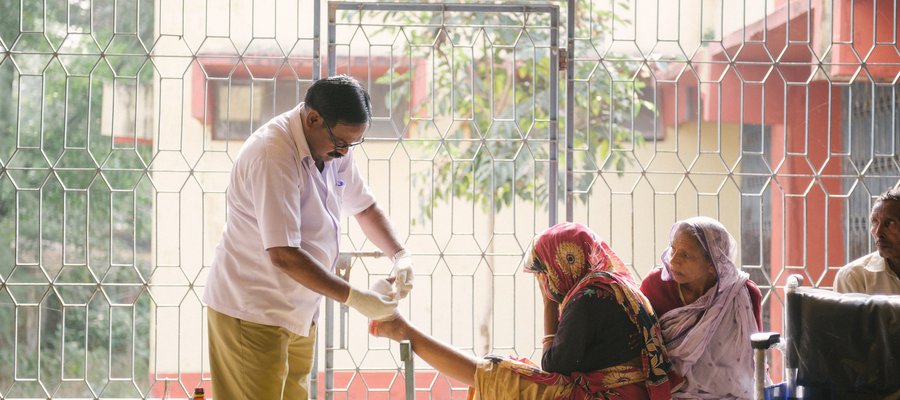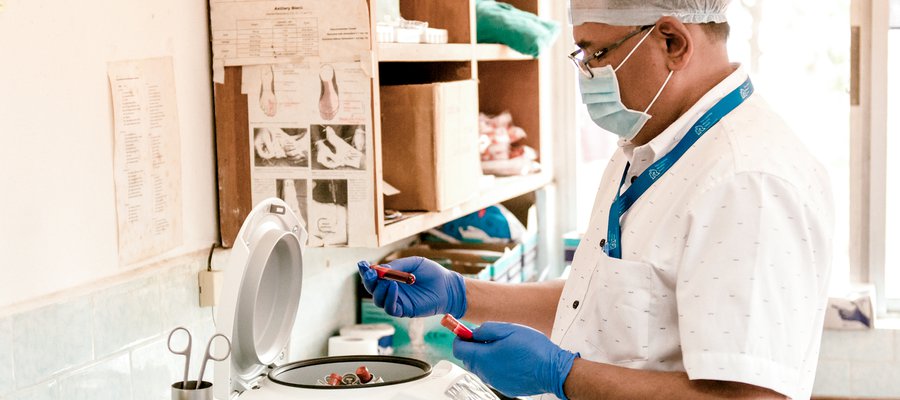Solving leprosy's ulcer problems

The ulcer problems that need to be addressed
Ulcers are very common amongst leprosy patients, with up to 20 percent of people affected by leprosy being at risk of developing an ulcer. These ulcers are wounds that occur because people lose feeling to a part of their body. This means, for example, they may not feel if there is a stone in their shoe that is damaging their skin.
After a patient has their first ulcer, it is likely that ulcers will recur for the rest of the person's life, causing devastating disruption. In places where walking is central to transport and work, leprosy ulcers (which most often affect feet) can lead to a downward spiral of losses over time, including income, job, community, home, family, and even limbs.
When placed in hospital wards alongside these patients, first-time ulcer patients can develop suicidal thoughts, because they see the other patients' sad stories as their own unavoidable future.
Solving leprosy's ulcer problems through prevention
In Nepal, Dr Indra Napit is looking at how community intervention can prevent ulcers. Through the SHERPA Project, our team in Nepal are tracking the work of 18 self-help groups (SHGs) across three districts of Nepal. These SHGs are trained in how to prevent ulcers and are supported by our team so that they have different tools for self-help.
Our team wants to understand which interventions work best, which will be done by periodically interviewing participants and measuring what did or did not help to prevent ulcers.
One of these interventions is financial support. Each SHG has around 25 participants and each group will be given 20,000 rupees (around £125), which can be used as an investment fund and a savings scheme. The money could prove pivotal in preventing ulcers because it allows SHG members to invest in new livelihood activities. These new livelihood activities could be trades that are not as physically demanding and less likely to cause ulcers, such as tailoring, raising chickens or goats, or running a small shop.
The team of researchers hope to develop guidelines from this prevention-based research that will be submitted to the WHO and will become standard ulcer-prevention practice across the world.

Solving leprosy's ulcer problems through treatment
Leprosy ulcers have long been treated with a daily saline (salt water) wash and fresh gauze wrap. However, Dr Indra and his team are considering a new treatment called L-PRF (Leukocyte Platelet Rich Fibrin). This LPRF treatment is a regenerative treatment that utilises concentrated white blood cells and regular stem cells that circulate in the body.
The L-PRF treatment sees blood drawn from a patient and then spun in a centrifuge so that the white blood cells, stem cells, and other healing factors are concentrated. Afterwards, the healing mixture is a gel-like substance that is pressed into strips and applied like a plaster to the patient's ulcer.
So far, these L-PRF strips have caused leprosy ulcers to heal more quickly, regenerating new tissue without much scarring. One patient had a foot ulcer that covered nearly the entire sole and had not healed in a year with the traditional Saline treatment. After switching to L-PRF, the ulcer healed within 10 weeks.
Dr Indra is leading a randomised control trial comparing L-PRF with the saline treatment. He expects the results from the trial will provide the evidence base that's needed in order to change international treatment regimens. He hopes to start training new teams to use this revolutionary new treatment very soon.